Coffee is one of the most beloved beverages worldwide, and for many, the daily ritual produces an unavoidable byproduct: used coffee grounds. While many discard them, coffee grounds are a gardener’s hidden treasure. Packed with nutrients, organic matter, and natural compounds, they can enhance soil health, promote plant growth, deter pests, and even support composting efforts. According to horticulture experts, incorporating coffee grounds into your garden offers multiple benefits. This article explores five genius ways to use coffee grounds in your garden for healthier plants, richer soil, and sustainable gardening practices.
1. Enrich Soil and Boost Fertility
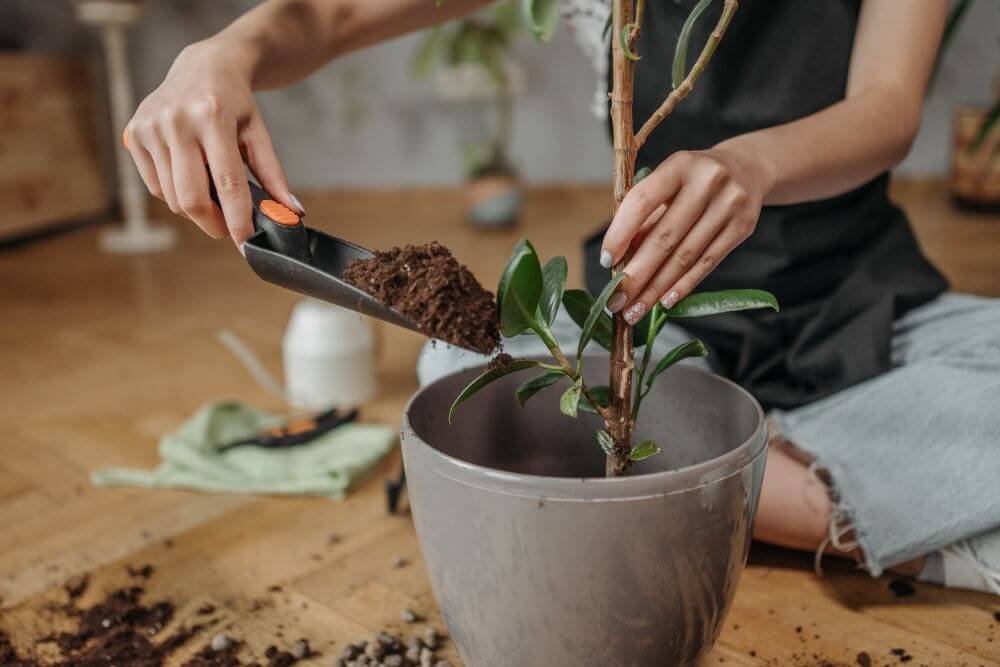
Used coffee grounds are an excellent source of organic matter and nutrients that improve soil structure and fertility:
- Nutrient Content
Coffee grounds contain nitrogen, phosphorus, potassium, and trace minerals—all essential for plant growth. Nitrogen is particularly abundant, which supports lush, green foliage. - Soil Amendment
Experts recommend mixing coffee grounds directly into garden soil or container mix. They improve soil aeration, drainage, and water retention, creating a favorable environment for roots. - Application Tips
- Mix coffee grounds with compost or soil in a 1:1 ratio to avoid over-acidifying soil.
- Spread a thin layer (no more than half an inch) on the soil surface to prevent compaction.
- Ideal for acid-loving plants such as azaleas, rhododendrons, blueberries, and tomatoes.
- Expert Insight
Dr. Emily Stone, horticulture specialist, notes: “Incorporating coffee grounds into soil provides a slow-release source of nitrogen that supports sustained plant growth without the risk of chemical overfertilization.”
2. Repel Pests Naturally
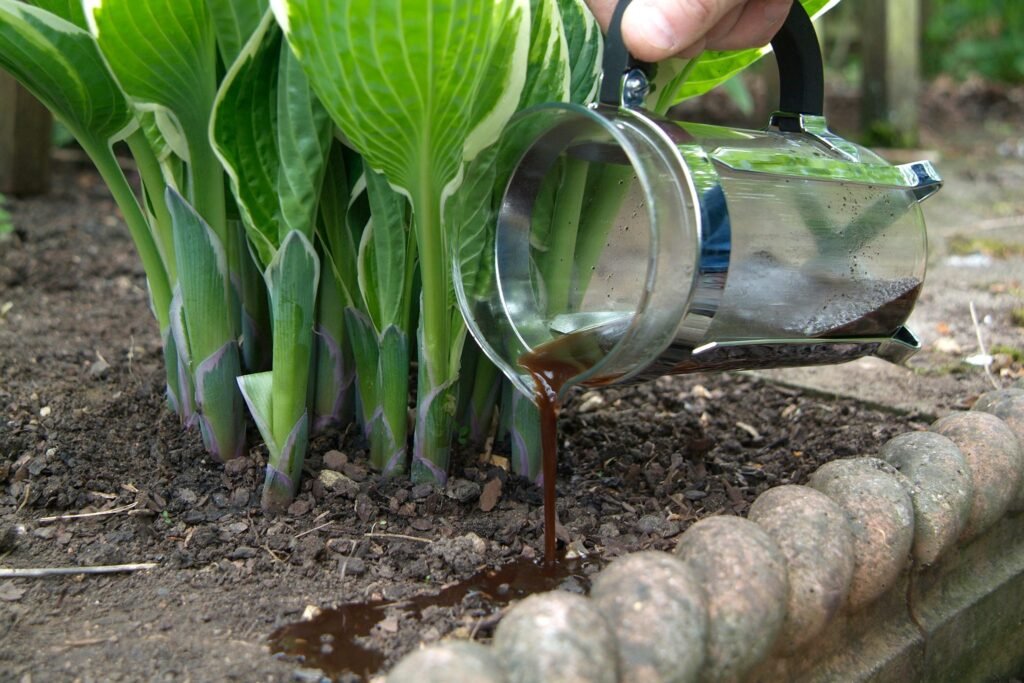
Coffee grounds contain caffeine and other compounds that act as natural deterrents for certain pests, making them an eco-friendly alternative to chemical pesticides:
- Slug and Snail Deterrent
Sprinkling a ring of dry coffee grounds around vulnerable plants can discourage slugs and snails. The rough texture and caffeine irritate their soft bodies. - Ant Repellent
Coffee grounds can disrupt ant trails and discourage them from invading garden beds. - Mosquito Larvae Control
Mixing coffee grounds into standing water in planters may reduce mosquito larvae populations. - Expert Insight
According to Dr. Raj Patel, a plant entomologist, “Coffee grounds can help gardeners reduce pest activity without harming beneficial insects, making them a sustainable and targeted solution.”
3. Composting Accelerator
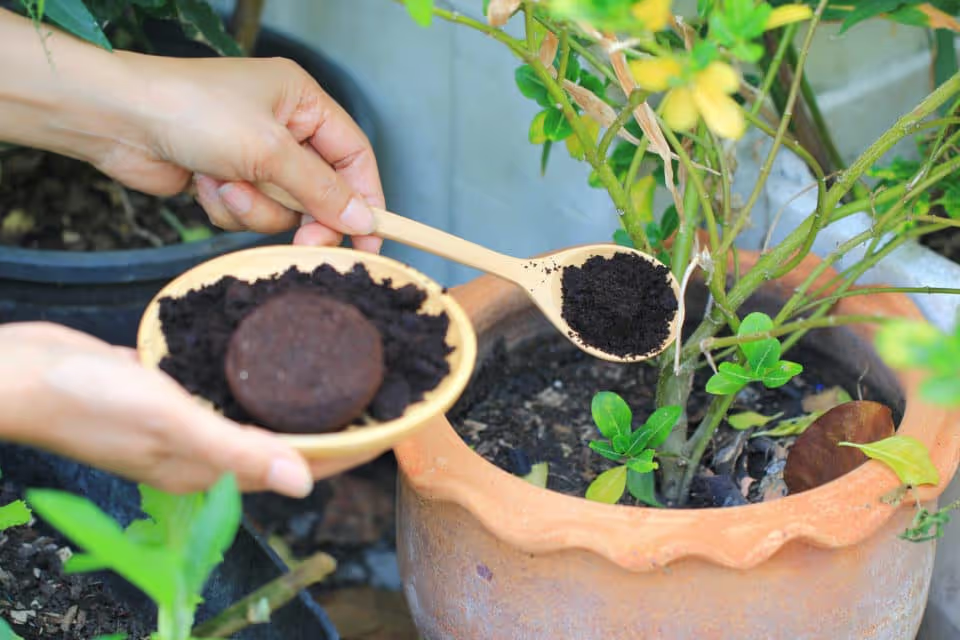
Adding coffee grounds to compost piles accelerates decomposition and enriches compost quality:
- Green Material Source
Coffee grounds are considered “green” compost material because they are high in nitrogen, balancing the “browns” (dry leaves, straw, paper). - Faster Decomposition
Mixing coffee grounds with other compost ingredients improves microbial activity, helping organic matter break down more efficiently. - Application Tips
- Add coffee grounds gradually in 1–2 cup increments to avoid clumping.
- Mix thoroughly with brown materials to maintain airflow and prevent odor.
- Composting with coffee grounds results in dark, nutrient-rich humus ideal for garden beds and potted plants.
- Expert Insight
Master gardener Lisa Green states: “A balanced compost with coffee grounds creates fertile, well-structured soil that retains moisture and supports healthy root systems.”
4. Mulch for Moisture Retention and Weed Suppression
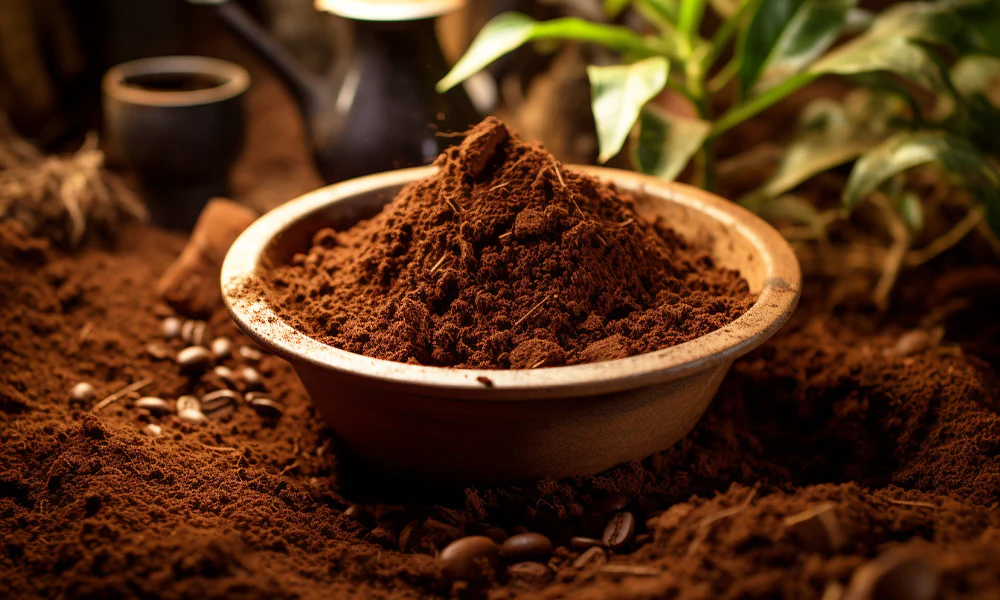
Used coffee grounds can act as an effective mulch, protecting plants and conserving soil moisture:
- Moisture Retention
Coffee grounds hold water well, helping soil stay moist for longer periods. This reduces the need for frequent watering, especially in container gardens or during dry seasons. - Weed Suppression
A thin layer of coffee grounds can prevent weed seeds from germinating. Combined with traditional mulch, coffee grounds improve overall soil coverage and aesthetics. - Application Tips
- Spread a ¼ to ½ inch layer of coffee grounds around plants.
- Avoid layering too thickly, as dense mats can repel water and inhibit plant growth.
- Combine with straw, wood chips, or shredded leaves for better results.
- Expert Insight
Horticulturist Maria Lopez explains: “Coffee grounds used as mulch create a microenvironment that supports soil microbes while conserving moisture—perfect for container gardens and raised beds.”
5. Natural Fertilizer for Container Plants and Indoor Gardening
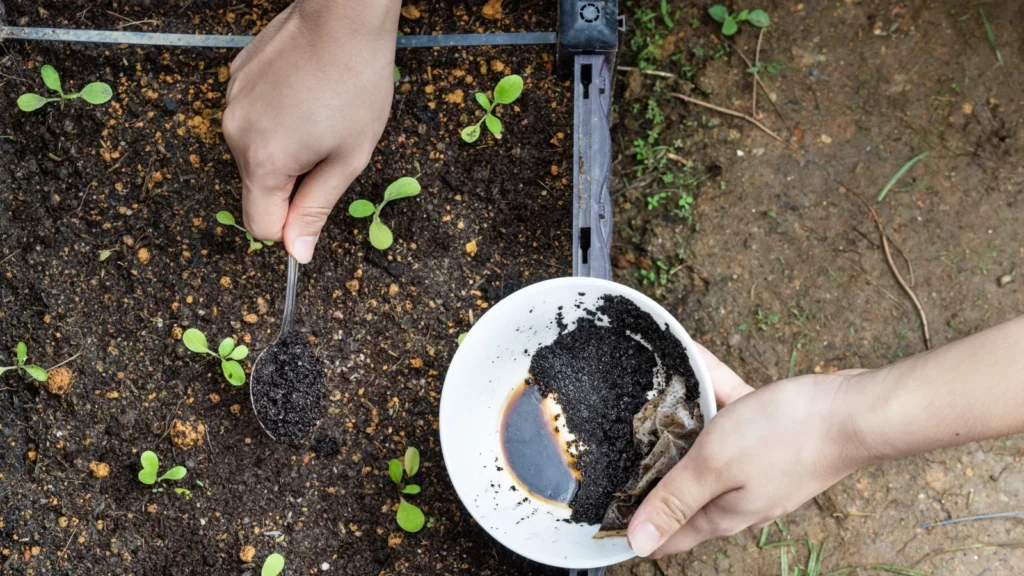
Coffee grounds are particularly beneficial for container plants, herbs, and indoor gardens:
- Liquid Fertilizer
- Brewed coffee grounds or “coffee tea” (soaked in water for 24 hours) can be used as a diluted liquid fertilizer.
- Provides a mild nitrogen boost and trace minerals directly to plant roots.
- Slow-Release Fertilizer
- Mix dry coffee grounds into potting soil for slow nutrient release.
- Avoid excessive use; a thin layer is sufficient to enhance fertility without altering soil pH drastically.
- Application Tips
- For potted plants, sprinkle 1–2 tablespoons of coffee grounds on the soil surface every few weeks.
- Ensure good drainage to prevent salt buildup and root stress.
- Expert Insight
Indoor gardening expert Jasmine Wong notes: “Coffee grounds provide a natural, gentle nutrient boost for houseplants, promoting greener leaves and healthier growth without resorting to synthetic fertilizers.”
Best Practices and Considerations
While coffee grounds are highly beneficial, proper use is essential:
- Moderation
- Excessive coffee grounds can over-acidify soil or inhibit plant growth.
- Use in thin layers or mixed with compost/soil to avoid negative effects.
- Avoid Mold Formation
- Spread coffee grounds evenly and mix with other organic matter.
- Avoid compacting or leaving moist piles that may develop mold.
- Use Fresh and Used Grounds Wisely
- Fresh coffee grounds are more acidic; used grounds are milder and safer for general use.
- Target Plants
- Acid-loving plants benefit most from coffee ground applications.
- For neutral or alkaline-loving plants, use sparingly or only in compost blends.
Additional Expert Tips
- Pair with Citrus Peels
- Coffee grounds combined with citrus peels in compost add extra nutrients and acidity.
- Attract Earthworms
- Coffee grounds improve soil structure and attract earthworms, which naturally aerate and enrich soil.
- DIY Fertilizer Mix
- Mix coffee grounds with eggshells and banana peels to create a nutrient-packed organic fertilizer for garden beds and containers.
Conclusion
Used coffee grounds are a versatile, sustainable, and nutrient-rich addition to any garden. According to experts, they can enhance soil fertility, deter pests, accelerate composting, retain moisture, suppress weeds, and nourish container and indoor plants. By applying coffee grounds thoughtfully and combining them with other organic matter, gardeners can maximize their benefits without harming plants. From home gardens to balcony planters, coffee grounds provide a practical, eco-friendly, and cost-effective way to promote healthy, productive gardens. Embracing this everyday byproduct not only reduces waste but also supports vibrant, thriving plant growth—truly a genius way to garden sustainably.
